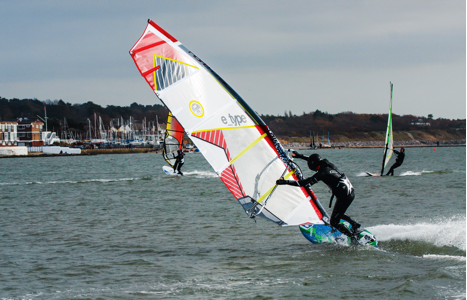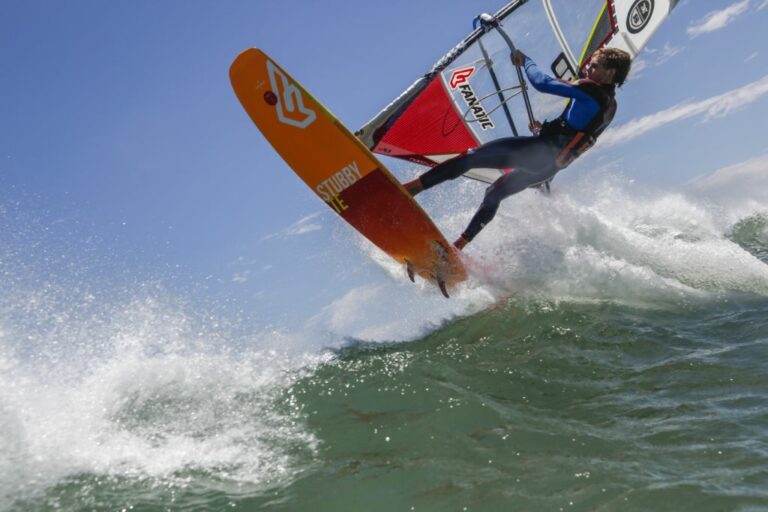It’s a tough decision whether to go skinny (RDM) or stay fat (SDM)… yes we’re talking about masts. Adrian Jones explains the pros and cons of each mast type, and why you might pick one over the other.

There was a time when no well-versed freerider would go anywhere near an RDM mast because they were for wavesailors. Built strong to withstand a pounding, but ultimately heavier, more expensive and not up to the performance of a fat mast.
But it’s not so clear-cut anymore. The mainstream brands are sitting on the fence and telling us their sails are now compatible with both, so what should we be buying? Let’s see if we can help clear things up a bit.
First off, it’s important to know that skinny masts have become a lot better. They used to be a relative ‘scaffold pole’ in comparison to the SDMs, but as material and construction technology have improved, so too have RDM masts.
In terms of outright performance, they are getting very close to the performance of SDMs now. As such, you can generally expect an equivalent carbon content SDM to make your sail feel slightly more responsive, more stable at the top end and more efficient to plane at the bottom end, with an overall lighter feel in the hands. This difference is accentuated by the longer the mast length that you are comparing and, most significantly, in the lower carbon content versions. We should also point out that due to the lower wall thickness, SDMs are still slightly lighter and cheaper than their RDM equivalents.
So at this point you are probably thinking that the case is closed and SDM is the best option. But before we jump the gun, let’s consider the case for the RDM.
Many modern rotational sails are actually now designed for RDM. SDMs are still compatible, but ultimately the sails are progressing in the direction of RDM and if you want to future-proof your mast purchase it’s a fact worth considering. We saw it before with wave sails, where initially they were designed for SDM, whilst also being ‘RDM compatible’. Then the designers made the jump to primarily RDM, but still remained ‘SDM compatible’ and now many have gone exclusively to RDM to the extent that you can’t actually fit an SDM up the luff tube. It would be a good guess to say the same is likely to happen with all rotational sails.
Shorter luff lengths, lower downhaul tensions, improved RDM mast quality and stability obtained by batten rotation at the luff, have all steered the designers into the domain of RDM masts for rotational sails. Whilst the performance of the mast itself may not be quite on par with SDM yet, it’s actually the combination of sail and mast that really counts. And with the designers working around RDM right now, the overall package has really caught up.
The RDM mast also offers other benefits and durability is a big one. So too is ease of rigging – the narrower mast easing into the luff tube with less hassle. And finally there is the narrower fit in the hands, giving better feel and control in any situation that requires the mast to be gripped, such as waterstarting and tacking etc.
So which should you buy, RDM or SDM? Well, we believe that in 460 cm or less for use with rotational sails, you should go RDM. It’s the direction the industry is going and will help your mast last the test of time, both from a durability and evolutionary point of view.
If, however, you are looking for something longer than 460 cm or for use in cambered sails, then we would advise sticking with SDM.
Simple, hey?!





